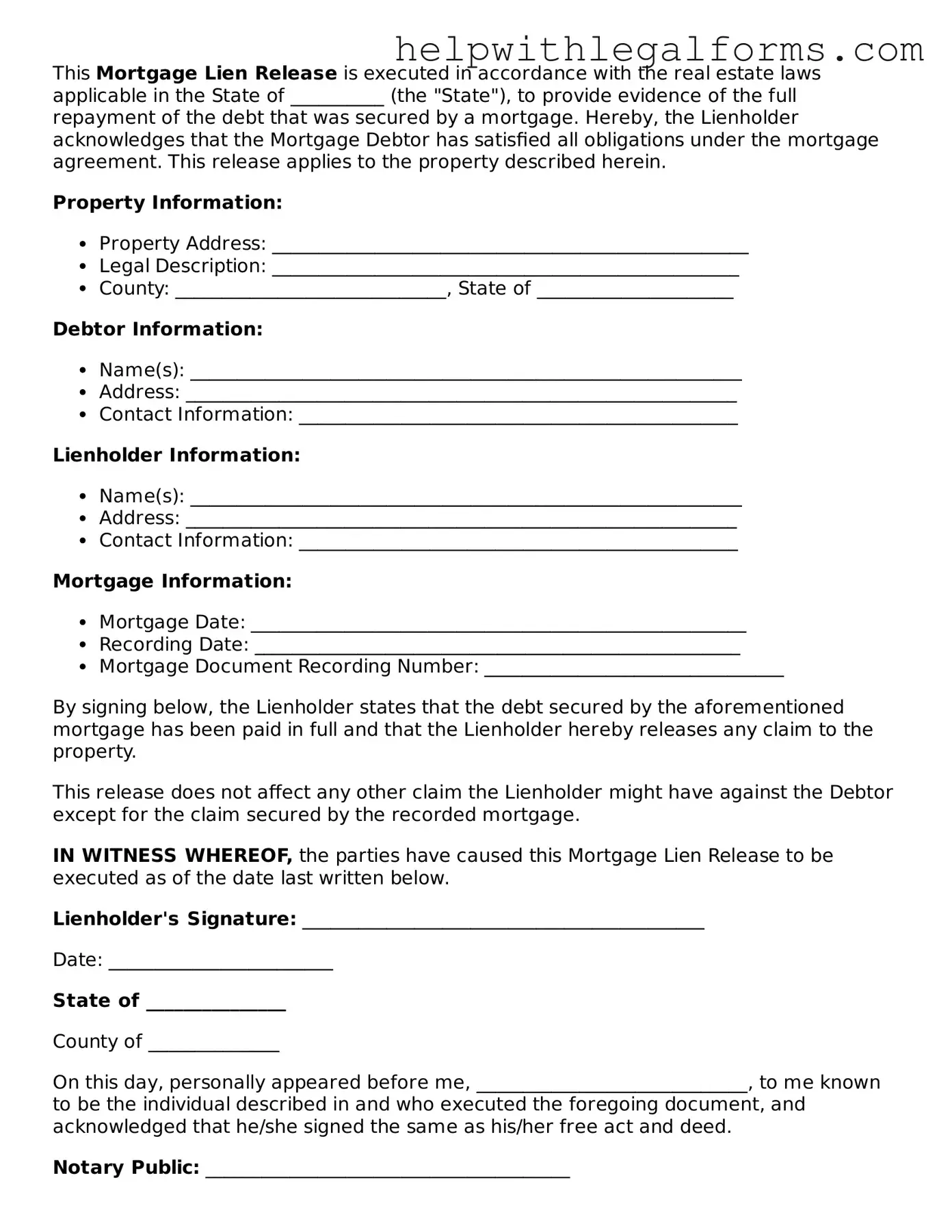This Mortgage Lien Release is executed in accordance with the real estate laws applicable in the State of __________ (the "State"), to provide evidence of the full repayment of the debt that was secured by a mortgage. Hereby, the Lienholder acknowledges that the Mortgage Debtor has satisfied all obligations under the mortgage agreement. This release applies to the property described herein.
Property Information:
- Property Address: ___________________________________________________
- Legal Description: __________________________________________________
- County: _____________________________, State of _____________________
Debtor Information:
- Name(s): ___________________________________________________________
- Address: ___________________________________________________________
- Contact Information: _______________________________________________
Lienholder Information:
- Name(s): ___________________________________________________________
- Address: ___________________________________________________________
- Contact Information: _______________________________________________
Mortgage Information:
- Mortgage Date: _____________________________________________________
- Recording Date: ____________________________________________________
- Mortgage Document Recording Number: ________________________________
By signing below, the Lienholder states that the debt secured by the aforementioned mortgage has been paid in full and that the Lienholder hereby releases any claim to the property.
This release does not affect any other claim the Lienholder might have against the Debtor except for the claim secured by the recorded mortgage.
IN WITNESS WHEREOF, the parties have caused this Mortgage Lien Release to be executed as of the date last written below.
Lienholder's Signature: ___________________________________________
Date: ________________________
State of _______________
County of ______________
On this day, personally appeared before me, _____________________________, to me known to be the individual described in and who executed the foregoing document, and acknowledged that he/she signed the same as his/her free act and deed.
Notary Public: _______________________________________
My Commission Expires: __________________
